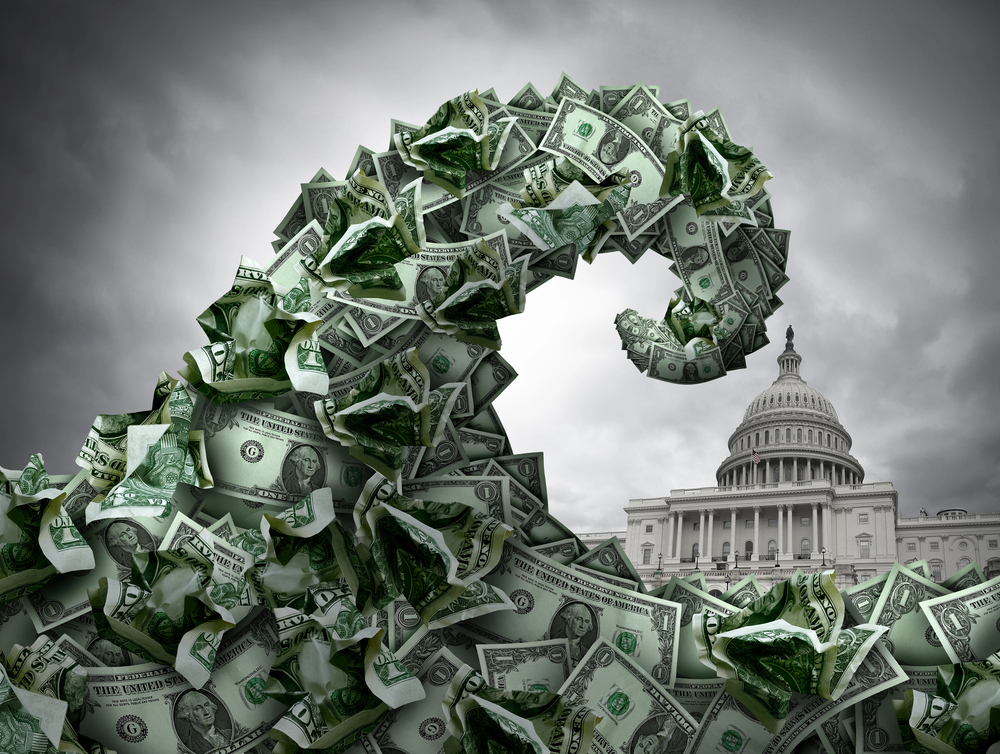On July 26, Joshua Rauh, a senior fellow at the Hoover Institution, testified at the Reagan Library before the House Ways and Means Committee. I learned a lot from his testimony and want to share it. Here are some highlights.
A growing economy is essential for expanding economic opportunity for all Americans. It is deeply concerning, then, that in its January 2025 Economic Outlook the Congressional Budget Office (CBO) projected real GDP growth to average just 1.8 percent over the next decade. To put that in perspective, had growth been that low over the last 50 years, the US economy today would be nearly 40 percent smaller.
There is a strong link between a well-performing economy and rising incomes across the income distribution. We’ve seen this relationship clearly over the last two decades. From 2008 to 2016, the economy grew at an annual real rate of just 1.7 percent. During that time, median real wages rose 0.4 percent per year. In comparison, from 2016 to 2019, real GDP grew at 2.7 percent, leading to median wages rising 1.1 percent per year.
And:
Pro-growth tax reforms depend on accurate, trustworthy, and transparent scores from the Joint Committee on Taxation (JCT) and the CBO. These agencies are currently falling short of that standard. For example, the JCT’s conventional model remains opaque. It is built on decades-old code and is supplemented by “off-model” calculations that are poorly documented. Key parameters—such as how rate changes affect tax avoidance and evasion—are kept hidden, making it difficult to evaluate their results.
Congress should require that scorekeepers enhance transparency, modernize their outdated models, disclose key assumptions, and publicly benchmark their parameters to relevant scholarship. In addition, the scorekeepers should offer sensitivity analyses of their scores or offer candid, systematic assessments of the confidence they have in specific estimates. These reforms would build trust in the official scores and provide lawmakers with more information, which will facilitate further pro-growth tax reforms.
And:
As I noted, my recent academic work suggests that the CBO and the JCT may understate the effects of these provisions on the economy. This could translate into substantial differences in the CBO’s assumed GDP growth rate and its deficit effects. Using the CBO’s rule of thumb workbook, if annual productivity growth is 0.25 percentage points higher, the annual GDP growth rate over the next 10 years will average 2.1 percent. This contrasts with their current forecast of 1.8 percent. CBO estimates that such a difference in growth would result in an additional $1 trillion reduction in the deficit over the 10-year budget window. If annual productivity growth is 0.5 percentage points higher, annual growth would reach 2.5 percent and deficits would fall by an additional $2 trillion over the 10-year budget window. This would offset more than half of CBO’s projected 10-year deficits from the bill and, importantly, fully cover the projected deficit impact in the final years of the budget window. And that is before accounting for any additional tariff revenue raised by the administration. (italics added)
And:
Finally, and perhaps most importantly, future growth depends on spending restraint. The primary fiscal challenge facing the United States is not insufficient revenue, but excessive spending. According to the CBO, federal revenues in 2025 are projected to reach 17.1% of GDP, very close to the historical average of 17.3% from 1974 to 2024. In contrast, federal spending is expected to be 23.3% of GDP, more than two percentage points above its historical average, and is projected to rise further in the coming decade.
On Josh’s last point, note that if the government were able to get federal spending down by 2 percentage points, the deficit would be 4.2% of GDP rather than 6.2%. Why does this matter? Adding 4.2 percent of GDP to the federal debt would keep federal debt constant as a percentage of GDP if nominal GDP grew by 4.2 percent. That would be a nice accomplishment on the way to actually reducing federal debt as a percentage of GDP. (Note: This mathematical claim holds when we start with debt in the hands of the public equaling GDP, which is approximately true today. When those numbers are not equal, it gets more complicated.)
I highly recommend reading the whole testimony, which is not that long.


READER COMMENTS
Thomas L Hutcheson
Jul 31 2025 at 4:44pm
But all the main points of the Trump Agenda — increasing defcits, restrictions of trade, restriction of high earning immigrants deportations, defunding scinece — are anti-growth. Maybe 1.6 is too high
Craig
Jul 31 2025 at 8:11pm
The wildcard is AI.
Scott Sumner
Jul 31 2025 at 9:08pm
I agree with many of the specific points, but am far more pessimistic about the fiscal outlook, which the recent BBB made significantly worse. The bill is full of accounting gimmicks which disguise the actual cost of the legislation, but which the CBO is obligated to take at face value in its estimates. The bill also contains major anti-growth provisions, such as the SALT increase.
In addition, if the Trump administration is even partly successful in its plans to deport millions of workers, that would reduce the trend GDP growth rate even further. I’d be surprised if GDP growth averaged even 1.8% over the next decade.
The Democrats will probably take the House in 2026. Will they cut spending?
If you go back to 2017, all sorts of promises were made about the future path of the budget deficit. The actual outcome was far worse than advertised (as I warned at the time), and not just due to Covid. It’s hard to see how anything has changed. I hope I’m wrong.